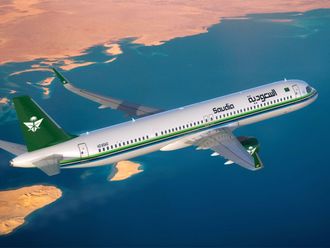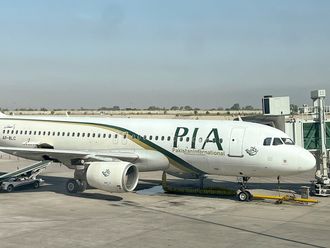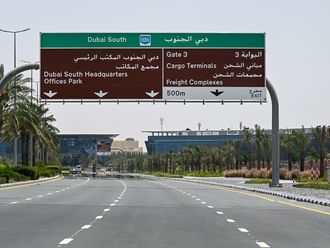
New York: Boeing has been in the headlines lately following a series of problems with its aircraft, with the most recent incidents in Turkey and Senegal.
The episodes, which follow a near-disastrous panel blowout on an Alaska Airlines jet in January, point to production and maintenance issues, say experts, who don't see an obvious pattern behind the myriad incidents.
Rash of incidents
The US plane maker has been under scrutiny since January 5, when a Boeing 737 MAX 9 operated by Alaska Airlines made an emergency landing after a fuselage panel blew out, somehow avoiding serious injuries in an incident that safety officials say could have been catastrophic.
read more
United Airlines has experienced recent issues on various flights involving Boeing planes, as has Southwest Airlines, which in early April had an engine fire on one flight.
On Thursday, a Boeing 737-300 skidded off a runway in Senegal, resulting in 11 injuries, including four that were serious.
That followed a Wednesday incident in Istanbul in which a Boeing 767 cargo plane belonging to FedEx landed on its nose after its front landing gear failed to deploy.
Such a confluence of incidents is "pretty rare" within air travel, said aviation expert Bertrand Vilmer, who described the myriad "abnormal" problems as reflecting "an alignment of unfavorable planets."
Alternative causes
Aviation experts usually look to three possible explanations for problems.
There can be a design defect, as with the two fatal crashes on 737 MAX jets in 2018 in Indonesia and 2019 in Ethiopia that involved a flaw in a flight stabilizing system.
Aviation watchers have pointed to a production defect as the likely source of the Alaska Airlines incident, which entailed a Boeing 737 MAX 9 that had only been delivered in October.
A preliminary report by the National Transportation Safety Board published in February found that four bolts meant to help secure the panel that blew off were missing.
A third possible cause would be insufficient maintenance.
While design and production are the responsibility of the plane maker, the airline is in charge of keeping up the plane once it receives it.
"Once the aircraft is delivered, Boeing has nothing to do with it anymore" in relation to maintenance, said Richard Aboulafia of AeroDynamic Advisory.
Safest form of transport?
Notwithstanding the recent spate of incidents, aviation experts point to a strong safety record overall.
"We haven't had a single casualty in the entire US airline industry in way over a decade, despite millions of people flown," said Aboulafia. "That's incredible."
Aboulafia calls modern flying "the safest form of transport ever created by people," noting that "everyday, hundreds of people get killed on the roads."
Boeing's rival, Airbus, has not been completely spared of difficulty. Hundreds of planes produced by the European company are being taken out of service to check for microscopic "contamination" of metals in engines made by Pratt & Whitney.
Airbus also had a public dispute with Qatar Airways involving the degradation of exterior plane surfaces.
But there have been fewer such issues at Airbus and not one incident that drew a comparable level of attention as Alaska Airlines, experts said.
"Every incident that has occurred on Boeing airplanes this year has made headlines, suggesting that Boeing airplanes are unsafe," said a note from equity research firm Bernstein.
"The reality is that the number of incidents in the US on Airbus and Boeing airplanes so far this year is proportional to the number of airplanes in the fleets of US carriers."
The US commercial fleet currently has about 4,800 planes, with about 60 percent Boeing planes, according to Cirium, an aviation analytics firm.











